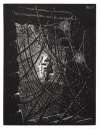Karel
Appel
Karel Appel, a Dutch painter and sculptor, was a founding member of the avant-garde movement CoBrA. His bold, vibrant works are a dynamic blend of expressionism and primitivism. If you’re looking for Karel Appel original prints and editions for sale or would like to sell, request a complimentary valuation and browse our network’s most in-demand works.
Notable series
Karel Appel art for sale
Discover Karel Appel prints for sale, exclusively available through our private network of collectors. Explore signed and unsigned screenprints, lithographs, digital prints, and rare editioned proof prints by era-defining blue chip artists.
Sell Your Art
with Us
with Us
Join Our Network of Collectors. Buy, Sell and Track Demand
Biography
Born in Amsterdam in 1921, Karel Appel showed an early affinity for art, much to the disapproval of his father, who owned a barbershop. Despite his father's initial opposition, Appel's passion was uncontainable, and he eventually enrolled at the Royal Academy of Fine Arts in Amsterdam in 1942. His education here laid the groundwork for his experimental and iconoclastic style, which would later define his career.
In the immediate aftermath of World War II, Appel’s artistic voice found resonance in an era craving new means of expression. The trauma of the war years had left a void in the European art scene, and Appel, along with like-minded artists, sought to fill it with a raw, intuitive approach to art-making. In 1948, he helped establish the CoBrA group – an acronym derived from the members’ home cities: Copenhagen, Brussels, and Amsterdam. The CoBrA artists were united in their rejection of formalistic and rationalistic tendencies in art, instead advocating for a primal, direct approach drawing inspiration from children's drawings, primitive art forms, and mythology.
Appel's work from this period is characterised by an intense, unapologetic use of colour and vigorous brushwork, often depicting abstracted figures and animals. In 1950, his fresco Questioning Children for Amsterdam’s City Hall caused public outrage for its perceived crudeness, but it was this same unfettered expression that would later earn him international acclaim.
Throughout the 1950s and beyond, Appel's art continually evolved. His travels to North America and Africa, and interactions with other artists, particularly those of the Abstract Expressionist movement, expanded his oeuvre to include sculpture and ceramics. He also ventured into stage design, creating sets and costumes for theatre and ballet productions, which revealed his multidisciplinary talents.
Appel's work has been celebrated in major exhibitions around the world, including retrospectives at the Stedelijk Museum in Amsterdam and the Centre Pompidou in Paris. His daring use of form and colour not only defined his legacy but also inspired a generation of artists to explore the emotive potential of art.
Today, Appel's legacy endures as a testament to the power of artistic innovation. His paintings, marked by untamed energy and emotional depth, continue to captivate audiences and hold a significant place in the narrative of European modern art.











































